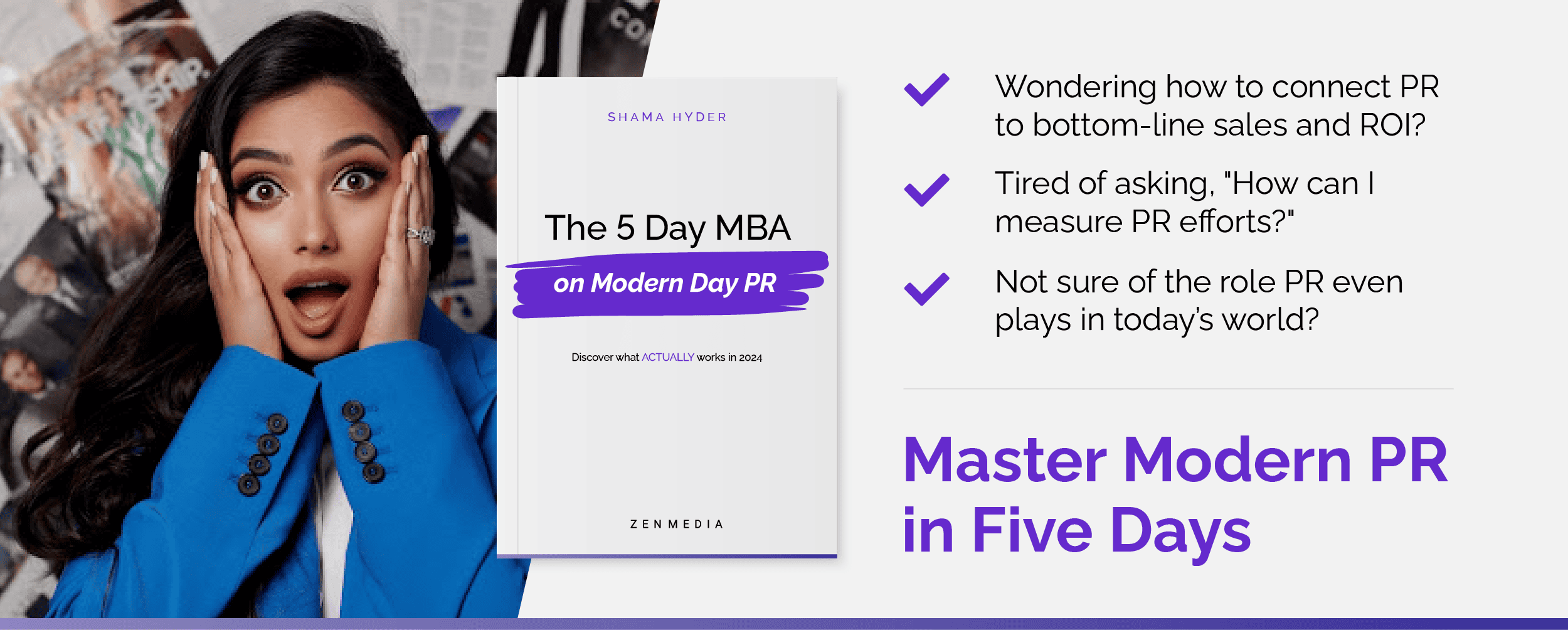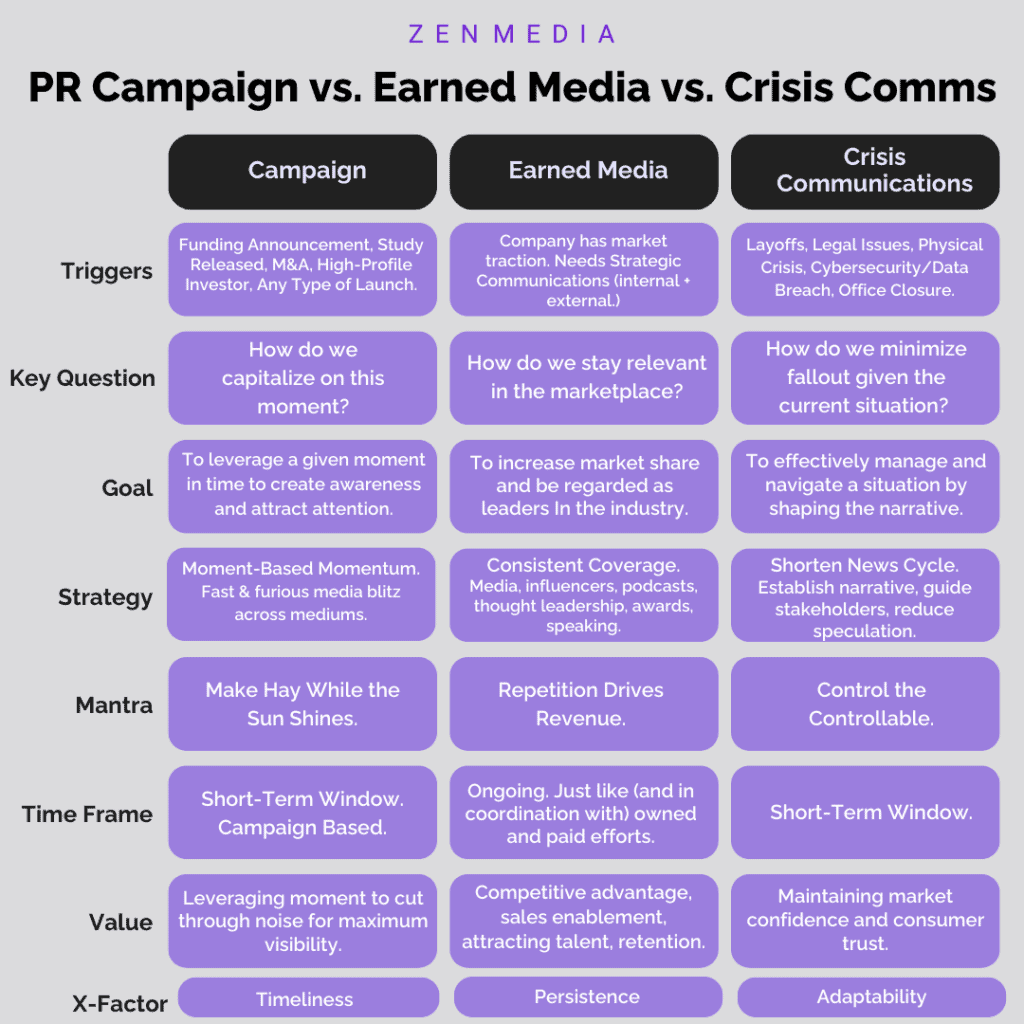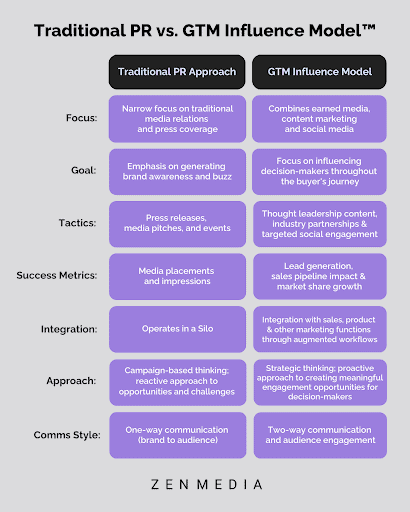
PR has changed more than ANY OTHER go-to-market mechanism in modern history. Shockingly, strategies have remained the same…and that’s led to diminishing returns. To connect the dots between PR and your bottom line, you need to understand the new PR landscape. Our 5-Day MBA in Modern Day Earned Media covers:
- How to choose the right PR strategy for your goals and bottom-line ROI
- The new rules of earned media and how to earn credibility
- The crucial reframe that unlocks strategic visibility with customers and partners
- How to turn headlines into selling opportunities
- The 5-step process that takes you from CREDIBILITY to CLOSE
Learn exactly what you’ve been missing, what ACTUALLY works in 2024, and how to guarantee the effectiveness of your PR.









